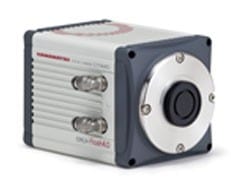A phosphorescent iridium(III) complex-functionalized poly(N-isopropylacrylamide) is a promising probe for bioimaging applications.


A phosphorescent iridium(III) complex-functionalized poly(N-isopropylacrylamide) is a promising probe for bioimaging applications.

Scientific camera „“ORCA-Flash4.0“ with a high sensitivity second-generation sCMOS detector which excels by high resolution and fast readout. It ist the first camera offering a better performance than all EM-CCD, CCD and first-generation sCMOS cameras for every fluorescence application.

Two new tools for the image processing library „Common Vision Blox“ (CVB), the „CVB Video Stabilizer“ for recording and compensating image transformations and „CVB Optical Flow“ for the computer-supported determination of motion components in images.

Fluorescent carbon dots can be made by plasma pyrolysis and used as printer ink.
An exceptionally flexible prototype cable-type battery can be used in a variety of shapes towards portable, wearable, and flexible electronics.

The plasmonic behavior of touching semiconductor disks shows a highly efficient broadband response in the terahertz regime as predicted by theoretical studies.

Researchers from the Chinese Academy of Sciences report optical waveguide hydrogen peroxide sensors based on a reactive sheath and a nanowire core.

The issue aims to provide a representative and comprehensive overview on the broad range of current biophotonics on-chip, spanning the full range from chip fabrication to applications in biomedical sensing and related fields.

The 24th International Liquid Crystal Conference was held on August 19th–24th in Mainz, Germany.

Professor Ozin looks back at the predictions for the field of nanochemistry he made 20 years ago; where has nanotechnology gone since?